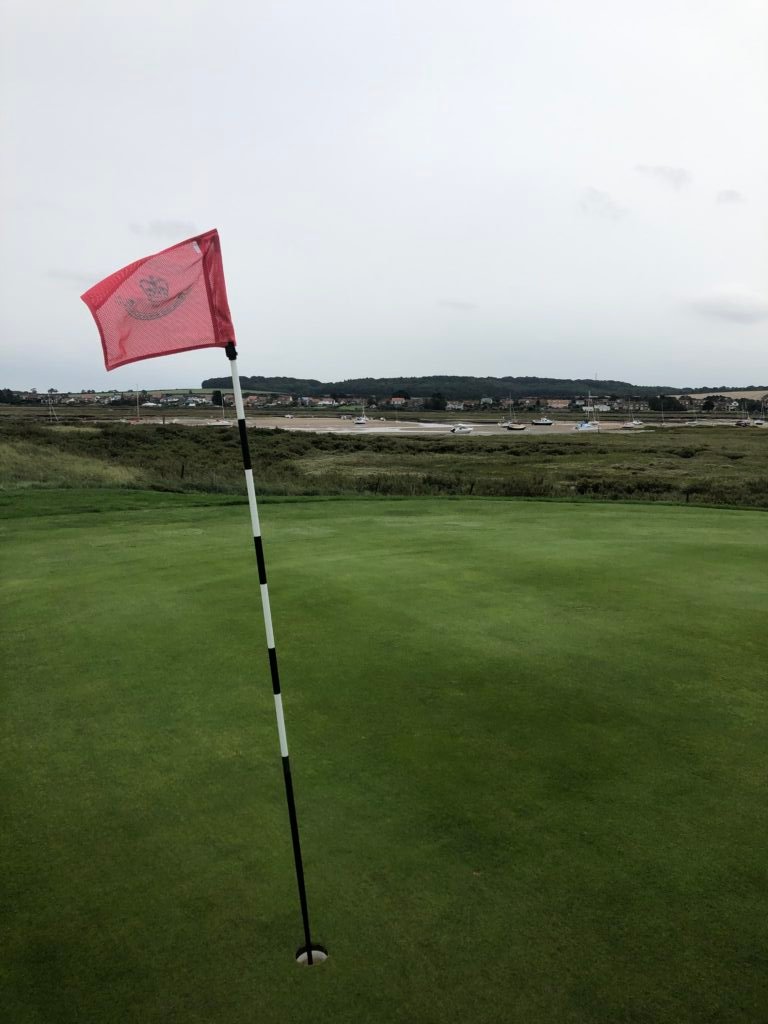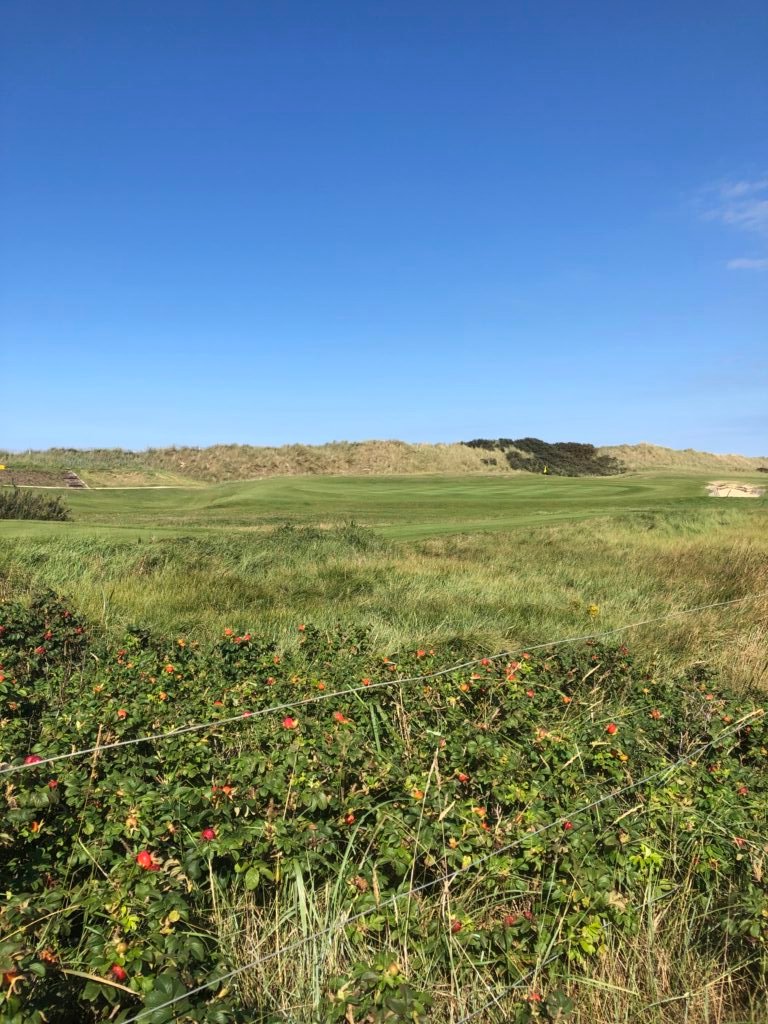Royal Cromer was given its regal status in 1887, one of the many royal courses to be bestowed with the honour by Edward Prince of Wales in the latter part of the 19th century. There are some distinguished names behind its creation, too: the layout was originally designed by Old Tom Morris and later modified by J.H. Taylor and James Braid. They have 14 Open Championships between them. More recently, Frank Pennink brought the course more up to date but one essential element regarding the enjoyment of a round at Cromer has remained the same – the magnificence of its recurring views out over the North Sea. (Or, as it was known when Bernard Darwin was writing his seminal work, The Golf Courses of the British Isles in 1910, the German Ocean.)
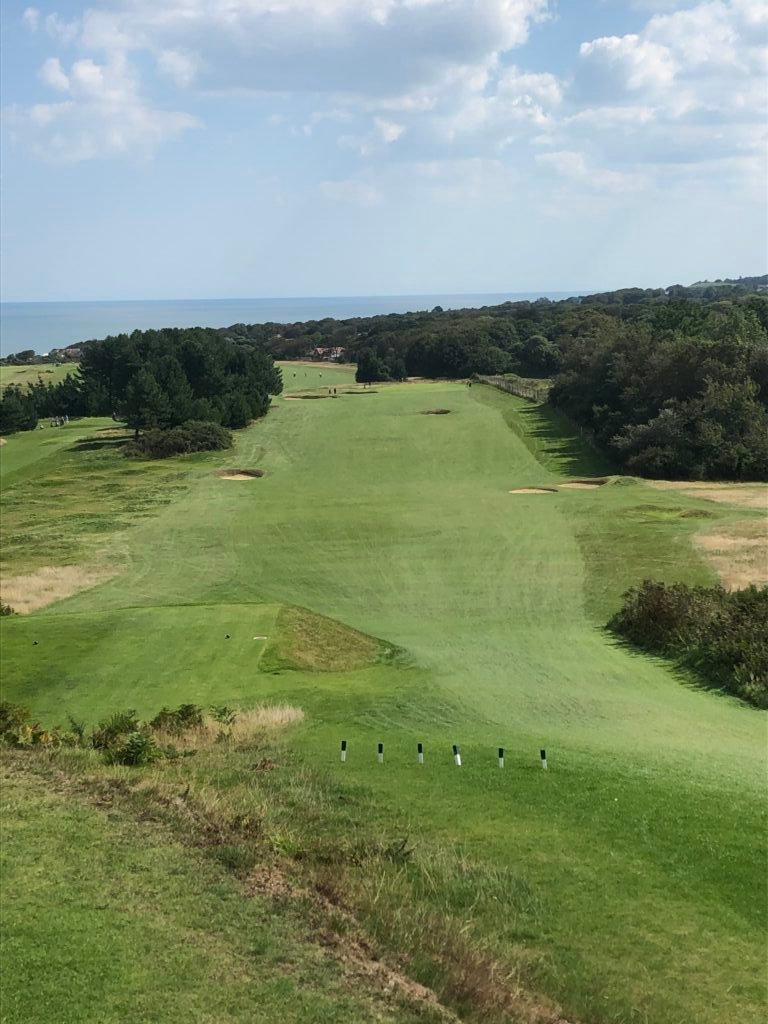
The view from the 4th tee at Cromer, providing a glorious view out to sea on this plunging 454-yard hole
At its highest point the course is some 320 feet above some typically glorious Norfolk beaches. It is doubtless down to the influence of Morris and Braid that the club has copied the traditional Scottish notion of giving each hole a name. On another occasion I might ascertain why the 2nd is called ‘Jimmy Clements’, or why the downhill par-three 9th is named ‘Wembley’. The 14th is easier. It’s called ‘Lighthouse’ because there is one beside it, one which now provides accommodation for holidaymakers. One other thing. Royal Cromer is hilly. Very hilly. When the round is over, your legs will know they have had an outing.
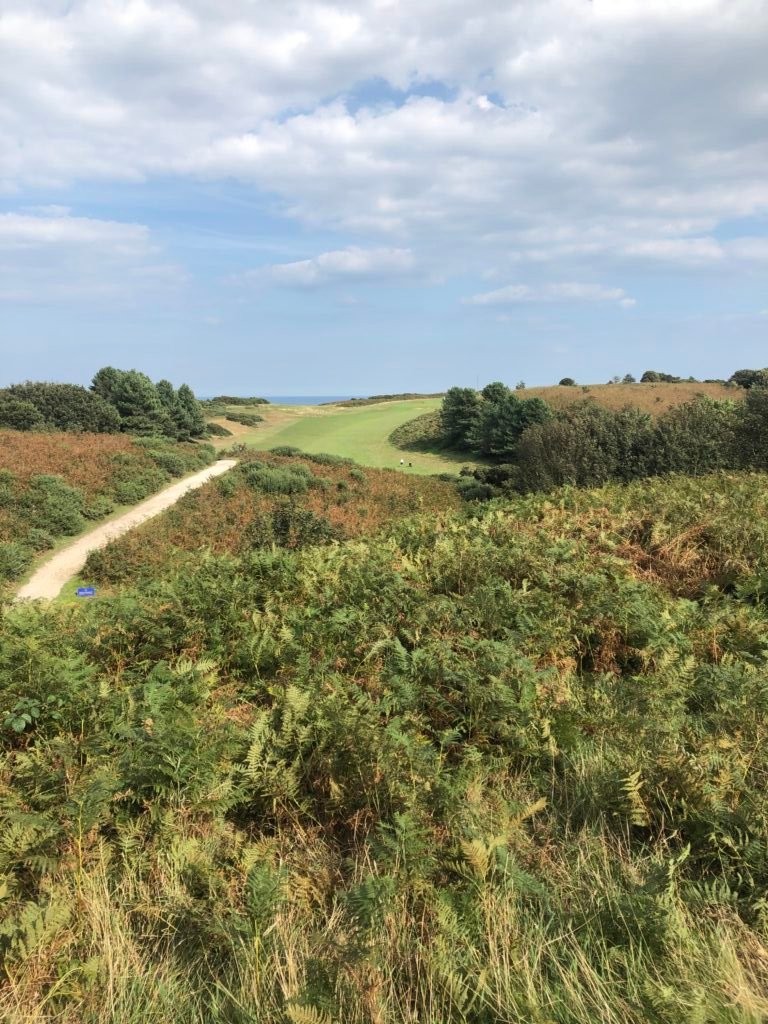
The 15th at Royal Cromer is called Valley, and it’s not hard to see why…another elevated tee shot to enjoy
In complete contrast, the course at Brancaster is basically flat. And this is a real links. Not only has it arisen from land which used to be under the sea, twice a day parts of it still are under the sea. On the par-five 8th, the water cuts across the fairway in two places when the tide is in, and on the par-four 9th the briny provides an occasional hazard in front of the green. As Darwin observed: “There is nothing quite like it anywhere else, as far as I know.” If the course ever held a professional tournament (perish the thought!), the competitors would manifestly not all be playing the same layout.
The formal name for the course at Brancaster is the Royal West Norfolk Golf Club. It is delightfully old-fashioned. Railway sleepers shore up some of the more formidable sandy hazards – to borrow from Darwin again, “alarming bunkers” – and the course is such a throwback, which I mean as a compliment, that it’s something of a wonder that plus-fours aren’t mandatory. It is rather fitting that, as on the Old Course at St Andrews, the first and last holes play on a shared fairway.
I only played these two courses on my recent visit to the north coast of Norfolk. Next time I’ll return for Hunstanton and Sheringham. There is no shortage of good options in this part of Britain.
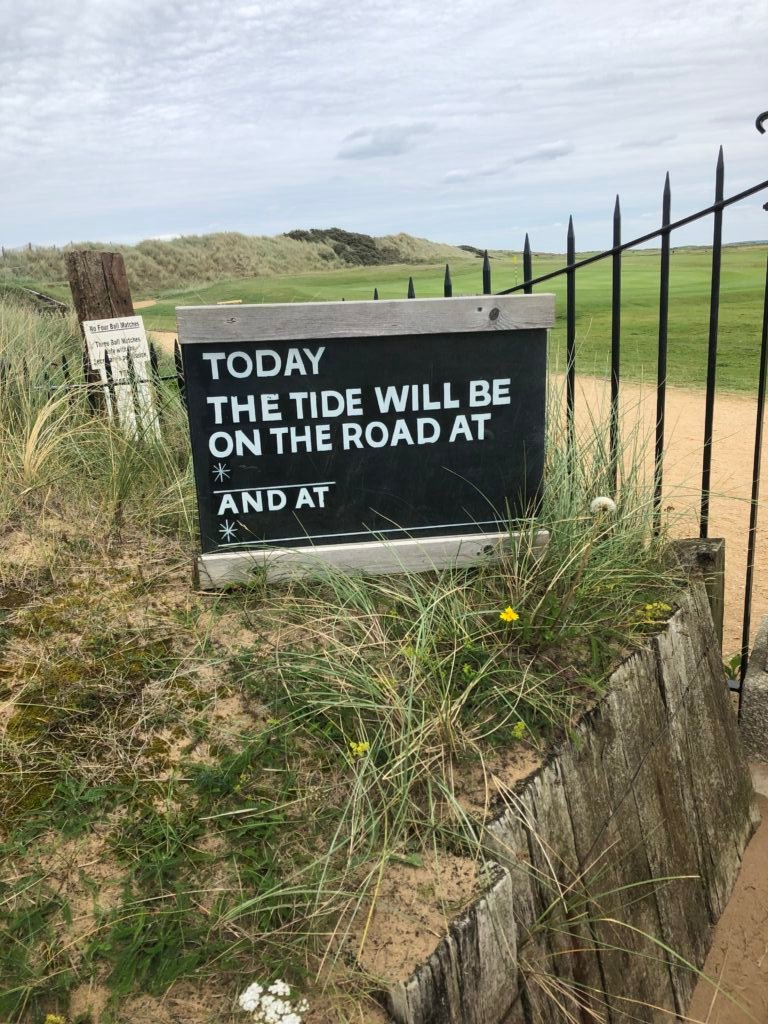
On a few days in the year, the tide at Brancaster rises so high that the road to the club is closed by the sea
You can follow me on Twitter @robrtgreen and also read my other blog at f-factors.com


